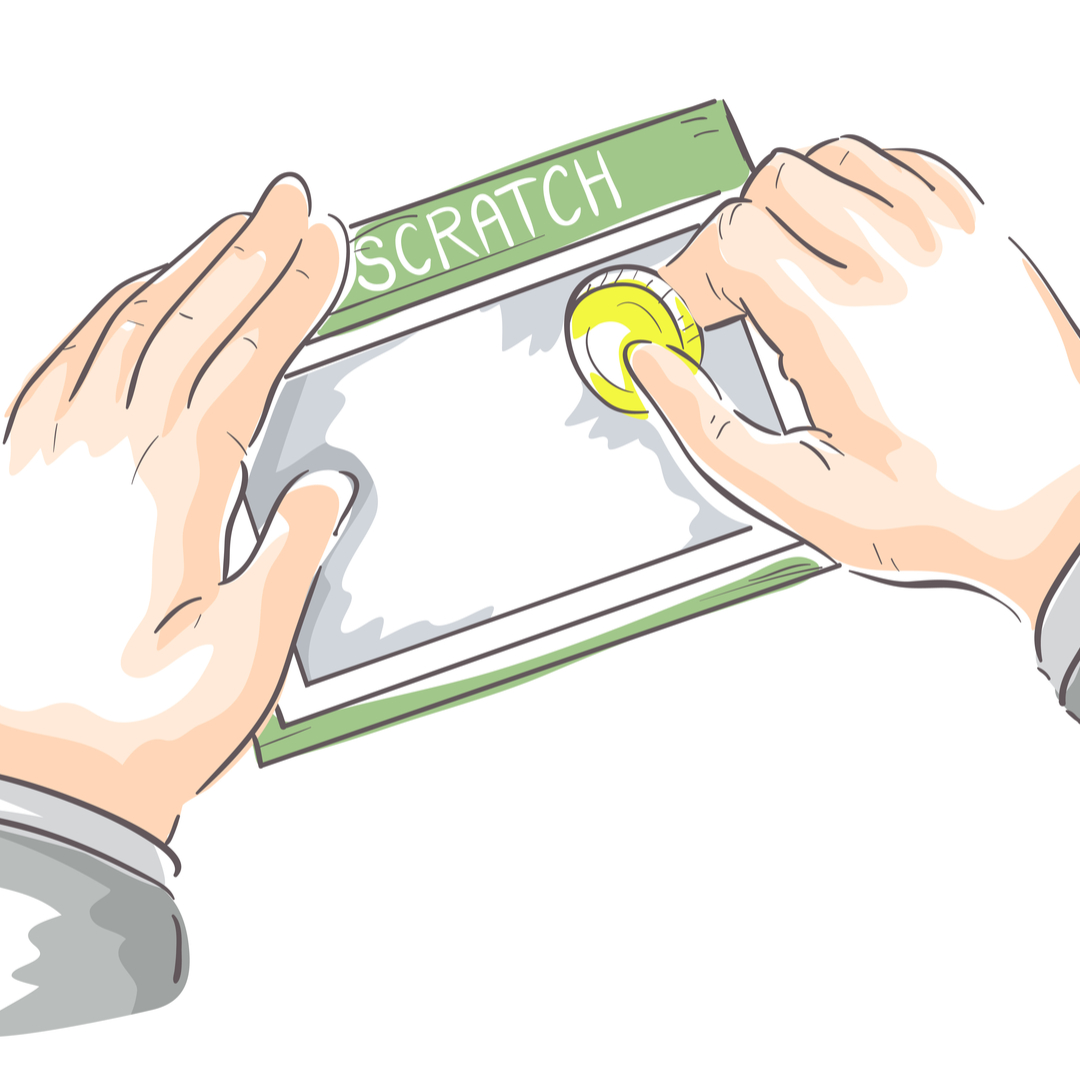Real World Interactivity Part 2: Lottery Scratch-Off Tickets
If you’ve been following along you’ll know that we’re running a series of posts discussing real-world interactivity and how it converts to digital marketing campaigns. You can catch the last installment, on scratch and sniffs, on our blog.
Today, we want to talk about another form of a scratch card, a lottery ticket or scratch-off. We all know the lottery can be thrilling to play. It’s how you find yourself adding on that extra lottery ticket when checking out for soda at the gas station. There’s something inherently exciting about scratch-off lottery tickets. The lottery has been around since near the beginning of recorded history. No matter the form, people seem to like games of chance. So when did scratch-off tickets become the go-to form of lottery game?The first scratch-off lottery ticket was invented in 1970 by a group of computer engineers. Little did they know the marketing power scratch-off technology would bring. In fact, by 1987 most states were offering some form of lottery scratch-off ticket. Today, physical scratch-offs remain the standard for many lottery games, but we’ve also seen a rise of digital scratch-its that replicate the experience using touch technology.

Why did this form of lottery become so popular? Well, there are a few principles of marketing psychology that might explain the lure of the lottery, and especially of scratch-off tickets.
First, let’s discuss the draw of the lottery or chance in the first place. There’s a marketing psychology principle called the Near Miss Theory that helps explain why the lottery and gambling are so rewarding. According to this principle, the brain is conditioned to respond positively to near-miss events. In the hunter-gatherer days, this might have meant a spear that narrowly missed your prey. Positive reinforcement in your brain chemistry assures you that you’re on the right track. In today’s digital world, Near Miss Theory explains why your basketball bracket is so enticing. It also explains why humans are drawn to games of chance.
When it comes to marketing, you can use the Near Miss Theory to encourage your customer to continue interacting your brand or product. Digital Scratch-its are unbeatable at raising your customer’s value determination of your brand. By calling on a familiar format like the Scratch-it that activates Near Miss Theory, your customers are more likely to build brand loyalty and continue interacting with your messages.
The second secret to the lottery tickets success is the scratch feature. Hiding a portion of your message from the reader until they’ve completed an action is called reveal marketing. It’s a specialized form of interactive content that invites your reader to participate by swiping, scratching or otherwise interacting with their smartphone or computer. Reveal marketing is proven to increase brand loyalty and ROI. In fact, reveal marketing campaigns can more than double your conversions.
So how do you bring the lottery ticket scratch-off to the digital world? Luckily, there are a host of options for creating digital scratch-off experiences. Here at Zembula, we’re proud to offer a reveal marketing solution that is highly customizable. You can create Scratch-its to share trivia or offer a discount. You can even create a sweepstakes campaign to capture the full experience of a lottery scratch-off on your reader’s screen. Scratch-off gambling cards have remained a popular format for the lottery for almost 50 years. That longevity can be attributed to the psychological effects of the scratch-off mechanism. With the high demand for digital experiences in today’s world, this form of real-life content translates effortlessly into a piece of stand-alone digital interactive content your customers can’t wait to interact with.
Grow your business and total sales





